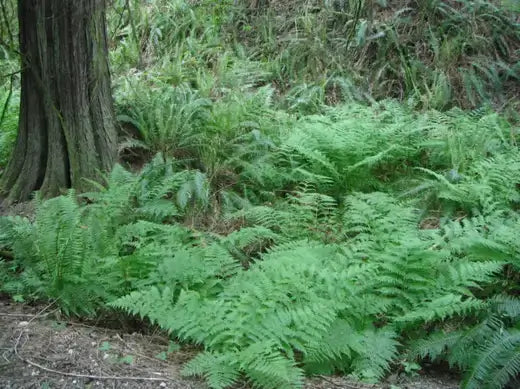A lady fern (Athyrium filix-femina) is a native fern found in many parts of Canada and the United States. Its flowers are white, sometimes with a hint of pink. The blooms appear in spring or summer, followed by black berries in the fall. It is a tiny plant that can form dense, low-growing mats and can be difficult to eradicate once established. Because of its clinging, creeping growth habit, lady fern is often used as a ground cover in moist to wet areas such as along the edges of ponds or near a stream.

Why Purchase Lady Fern
Lady fern is an excellent alternative if you have difficulty growing flowers or shrubs. It thrives in areas with moist soil, making it a perfect choice for ponds and other water sources. It is a low-maintenance plant that requires little fertilizer or watering. Once established, it proliferates and can easily be maintained by pulling out unwanted plants. Lady fern is also deer-resistant, a bonus for areas with deer issues. Another reason to plant a lady fern is for its gorgeous flowers. They come in shades of pink or white and will brighten up any spot in your yard.
Where it Looks Great
Lady fern is a beautiful shade of light green, making it a great addition to any part of your garden where a low-growing, undemanding ground cover is needed. The leaves are small and round and usually have a dark line across the center. This native wildflower blooms during spring and early summer with clusters of small, pale pink or white flowers. These plants thrive in moist soil and can be grown in full or partial shade. Lady fern is an excellent choice for quick, easy ground cover. It will thrive in almost any soil type and partial shade, making it an ideal choice for any garden. Buy Lady Fern at low prices and enjoy fast nationwide shipping.
Conclusion
Lady fern is a popular native plant used as a ground cover in moist soil or as a border in a shadier area. It thrives in areas with partial shade and moist soil. Its small, round leaves usually have a dark line running across the center and white or pink flowers that grow in spring and summer. It is a quick and easy ground cover that requires little fertilizer or watering and can be easily maintained by pulling out unwanted plants.
References
“Lady Ferns: Plant Care and Growing Guide.” The Spruce, 6 June 2022, www.thespruce.com/lady-ferns-plant-profile-5120209.



